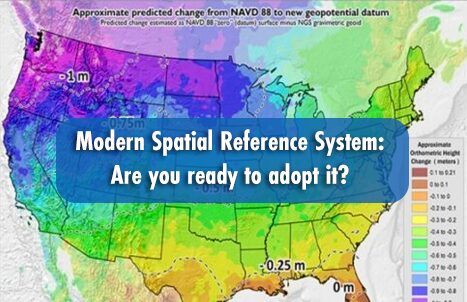Progress in Addressing GPS/GNSS Vulnerabilities
An overreliance on GPS/GNSS for positioning, navigation and timing applications underscores key vulnerabilities. Defense, security, safety, commerce, and critical infrastructure face these challenges. But several technologies show promise as valuable backups and alternatives.
Dependence on satellite-based systems for positioning, navigation, and timing (PNT) applications continues to raise concerns over vulnerabilities. This is not saying anything new. Indeed, there has been a tremendous amount of dialogue to the subject, within PNT related industries, end-use constituencies, defense, public and private sectors. The prospect of service disruptions could equate to varied levels of impact; yet there is wide country between the potential of vulnerabilities and the prospects for peril. Understanding the nature of PNT vulnerabilities, what the mitigation strategies are, and what alternatives and backups can be developed and deployed, is essential.
The most prevalent instances of the impacts of such vulnerabilities are felt on the battlefield, from deliberate acts of jamming and spoofing. There is a constant escalation of such instances, along with research and development in response, for detection and mitigation solutions. But the specter of impacts felt beyond the battlefield, from deliberate acts, inadvertent interference, even policy and funding for these critical PNT systems, has accentuated the widely recognized need for backups and alternatives. Overdependence on GNSS in critical elements of the engines of economies, has quietly yet sharply risen to the point where such vulnerabilities could, in worst case scenarios, seriously impact economic security—economic stability is national security.
While there continues to be conflicts in conventional battlefield environments, the overall nature of defense has evolved. Cyberwarfare sees bad actors seeking to disrupt the security, stability, and economics of rivals and foes through intrusions into critical infrastructure systems, elections mechanisms, social media, and financial systems.
Vulnerabilities of GPS, and other global navigation satellite systems (GNSS), that serve PNT applications, are widely recognized. It is important to keep in mind, that when discussion of vulnerabilities tilts towards dire warnings, that outside of battlefield scenarios, vulnerabilities have not as yet resulted in substantial harm. If viewed in the context of the billions of beneficiaries, both direct and indirect, of GNSS-enabled PNT, incidents of disruption barely register. Yet the potential for harm is always there. The good news is that there is a rapidly growing sub-industry specifically focused on the detection and mitigation of hazards to GNSS, and in development of PNT backups and alternatives.
Overdependence
Why such dependence on GNSS? The short answer is that it works so well for defense and other PNT uses. From the vantage of space, the delivery of radio signals and codes for ranging applications—navigation and positioning—and precise time delivery, can be ubiquitous. To completely replicate what GNSS can do for PNT with terrestrial solutions, would require infrastructure on the scale of power distribution and cellular networks. GNSS is the best “bang for the buck”. While there are many alternatives that can be deployed in localities or small regions, none offer the global reach of GNSS. Except via other satellites; but more on that later.
Short of some future breakthrough in advanced physics, perhaps at the sub-atomic level, there is no ready-to-roll alternative that could completely replace what GNSS does for PNT. Few are suggesting “replacement”. Instead, efforts are focused on making GNSS more resilient, and addressing vulnerabilities with backups and alternatives.

The economic value of GPS is astounding, considering it was initially developed for defense purposes. Next to the internet, GPS could be the most successful defense-originated technology ever, in terms of lateral benefits for broader societal uses. From a report by the U.S. National Institute of Standards and Technology:
“For the United States alone, [research] estimates that GPS has generated roughly $1.4 trillion in economic benefits (2017$) since it was made available for civilian and commercial use in the 1980s. The study authors further estimate that the loss of GPS service would average a $1 billion per-day impact to the nation. If the outage were to occur during the critical planting season in April and May and lasted multiple weeks, the impacts could be as much as 50% higher because of the widespread adoption of GPS-enabled precision agriculture technologies by American farmers. Benefits comprise productivity gains from new and existing products and services, improvements in quality, increases in personal enjoyment, and environmental and public health impacts.”
GPS is the shorthand term for the U.S. Navstar constellation; add the compound benefits of the European Galileo constellation, Russia’s Glonass, China’s BeiDou, India’s NavIC, Japan’s QZSS, and numerous regional augmentation systems, and the value as a global amenity is undeniable. But so are the stakes when considering vulnerabilities and the impacts should there be disruptions. Addressing vulneraries, seeking greater resilience, backups and alternate solutions is an imperative.
The Dim Lightbulb in Space
That a relative few satellites could deliver such a valuable amenity over the globe is also one of the key vulnerabilities. These satellite vehicles are at orbits of 20,00km or more, to provide global coverage with as few as possible. And, they have limited capabilities on-board. GNSS satellites are often characterized as “low wattage light bulbs in space”. The received signal on the ground it is a very weak -160dBW—easily drowned out by deliberate or inadvertent interference. The civilian codes from these satellites are publicly known and can easily be copied and tweaked.
The specter of jamming and spoofing hangs heavy over end use segments that have steadily increased reliance on GNSS. Most certainly defense, but also safety-of-life applications related to transportation and public safety.
“Civilian jamming is happening out there. It has always been there on the battlefield, and for 10 years we all recognized that it might happen off the battlefield, that there’s potential for it to happen. And it is now so easy for bad guys to do,” says Neil Gerein Senior Director of Marketing at Hexagon | NovAtel. Gerein has been in GNSS development for over 20 years, and has, among his roles, been involved in the development of interference detection and mitigation solutions. “Jamming is very cheap to do; simple and inexpensive devices, emitting in the same band as GPS can disrupt users. Depending to the power of the device, it could be a small area of say a city block, to an entire city.”
In front line defense environments, jamming and spoofing are commonplace, and simple devices are easy to deploy. Yet so are detection and mitigation solutions. An example is NovAtel’s GPS Anti-Jam Technology (GAJT) that is an antenna that can connected to both military and civilian GPS systems. It can detect the direction of interference, and block accordingly. For spoofing, there are also device-centric solutions, but there are also dedicated and encrypted signals for each of the respective GNSS constellations. Like the legacy P(Y) code on legacy satellites, and the newer M (Military) Code deployed on satellites of the GPS Block III modernization program.
While the civilian sector does not have access to defense specific signals, services like The GALILEO Public Regulated Service (PRS) provides position and timing restricted to government-authorized users, for public safety and sensitive applications which require a high level of service continuity. In addition, there are other authenticated services like the GALILEO High Accuracy Service (HAS)
One example of a deliberate interference vulnerability in the civil sector, that uses a simplified version of battlefield jamming, is the small, low power “trucker jammers” that people can buy online for as little as $50 USD and plug into a cigarette lighter socket. These are often used by people trying to disrupt the GPS device on their own vehicle to “cover their tracks” and keep evidence of unauthorized stops or routes from their supervisors. “The problem with these jammers is that they are often poorly manufactured,” says Gerein. “Bad wiring can result in disruption over a larger area”. The use of such devices is highly illegal, but many who use them either do not know this or are willing to take the risk as such devices are, if truly operating at the intended low power, difficult to detect. An example was the case in 2013 of New Jersey man whose small jammer caused disruption in the vicinity of an airport, and a key GPS base receiver there. He was fined $32,000 USD.
Interference can be inadvertent. Due to the frequencies at which the various GNSS signals work, for example L1 at 1575.42 MHz, L2 at 1227.60 MHz, and L5 at 1176.45 MHz, devices ranging from medical equipment, 3G Cellular comms to even domestic WiFi can potentially cause interference. But not always, and not often. Users typically do not have issues near, for instance, domestic WiFi, but if there are cheap components, poor wiring, or there are harmonics from the signals, they could. Powerful sources of RF, even if they are not in the same frequency range as GNSS can be sources of interference. Again, more of a potential than pervasive issue, but enough to warrant development of and investment in detection, mitigation, and alternatives.
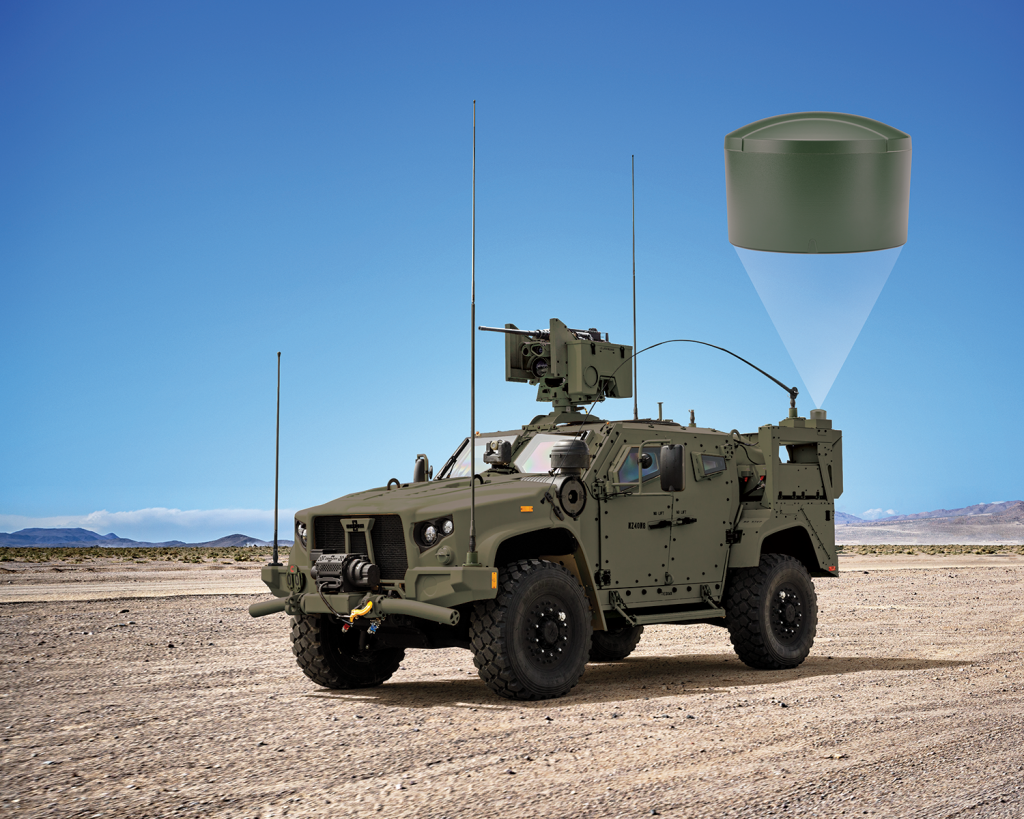
“There was the case of a local ferry in Washington State,” said Rick Hamilton, the GPS information analysis team lead at United States Coast Guard Navigation Center: NAVCEN. “The ferry operators noticed that when they got close to the dock, the ship’s GPS receiver would lose its fix. It took a while to figure this out and the interference would often affect the receivers on both ends of the ferry. It was later determined that a new radio on a truck waiting for the ferry had poor wiring.” NAVCEN operates a service to field reports of problems with GPS and other navigation systems. ““We provide maritime navigation and information services that enhance the safety, security, and efficiency of U.S. waterways,” says Hamilton. He adds that, “When it comes to the three main segments of civilian GPS (marine, aviation, and ground), the need for timely information is fundamentally the same for each.”
Hamilton says that in some regions of the world, like the eastern Mediterranean, that there are widespread incidents of interference reported (to similar agencies there in the region), but that the interference is likely due to proximity to conflict zones. Domestically though, incidents are not frequent by comparison. “I think we’re up to between 60 and 100 per year. It is not a big load. To say it is an issue here would be kind of an overstep; it could be characterized as an annoying problem. Most are not nefarious. Most of these events are unintentional interference.”
Hamilton does not downplay the potential for harm from incidents. He outlined scenarios where it would definitely be more than just an annoyance. For instance, there are stretches of the south-central California desert where truckers report frequent disruptions, and these could lead to a truck following routes that they are intended to avoid, like those with low bridges and rail crossings where a trucks could get high-centered and stuck. Using GPS for “geo-fencing” is widespread; it is used to keep trucks with hazardous materials out of certain areas, to avoid aforementioned route hazards, and to keep them on routes that will see the best fuel efficiency.
While Hamilton says that jamming does not often affect critical infrastructure and substantial operator problems as yet, the vulnerabilities are taken quite seriously. Such matters are high profile for both defense and critical civilian uses, so the processing of reports is elevated to the level of the U.S. Strategic Command, a joint military command. There is a process for fielding reports and coordinating analyses from multiple agencies. “When we receive a report, we work quickly to attempt to confirm whether there is actual interference. If confirmed, messaging quickly goes to all the five operation centers,” say Hamilton. “We’ll get everybody on the phone. And this includes the Federal Aviation Administration (FAA) National Operations Control Center NOCC), the DHS Cybersecurity and Infrastructure Security Agency’s (cisa.gov) National Coordinating Center for Communications (NCC) along with the Federal Communications Commission Operations Center (FCCOC).” As GPS is operated by the military, the Space Force’s GPS Warfighter Collaboration Cell (GWCC) is also an integral part of this coordination effort. “The watch standers come to consensus on how to proceed and the process can rapidly go all the way to the top if need be.”
While non-battlefield incidents are not widespread, there are formal mechanisms for addressing interference reports. There are studies of the impacts of vulnerabilities on civilian uses, and reporting processes put in place by the other GNSS constellation operators and the respective security and communications agencies of the host countries. For instance, the European Global Navigation Satellite Systems Agency has the QGN project: Quantification of the Potential Threat to Galileo from Man-made Noise Sources) to inform detection and mitigation strategies.
But how does this help a user in the field that is experiencing interference, especially as it may be short in duration, like from passing vehicle with a “trucker jammer”? It may be that users will need to be prepared to deal with short disruptions, and to have a “plan B”. For a surveyor this might mean having to use a conventional, non-GNSS instrument for a brief period to keep the job rolling. But for a large construction contractor, or farmer with numerous GNSS-guided tractors or other heavy equipment, it may mean halting operations until the interference stops.
Code Solutions
Spoofing in non-battlefield environments may be on the rise but military-targeted spoofing is nothing new. From the outset, anti-spoofing features have been part of the navigation satellite systems. Encrypted services have been added to each constellation, typically for defense purposes. For instance, the U.S. military maintains exclusive access to an element of the “P-code” (pseudo random code). It is ten times the frequency of the civilian C/A code and much harder to jam. When it is encrypted, it is called “Y-code” and only military receivers with the encryption key can receive it. The M-Code deployed on the newest Block of GPS satellites employs encryption as well. A signal like the M-Code can even be used for autonomous positioning even if all of the other signals are jammed or spoofed.
There are anti-jamming and anti-spoofing features designed into some of the newer constellations as well. For instance, NavIC, the Indian regional navigation system, has a restrictive service (RS) for defense purposes. In addition, it broadcasts in a 30-degree “cone” in contrast to the 160-degree cone of GPS satellites; this makes some jamming and spoofing strategies more difficult, and tri-band antennas are needed for NavIC—those are not easy to fabricate. Such authorized signals for both defense and civilian uses are being deployed on newer satellites of all constellations. The first test signals of a solution for Galileo will soon arrived for civilian applications. The Galileo Open Service Navigation Message Authentication (OSNMA) is a sophisticated algorithm within enabled receivers that uses a public key to check the authenticity of the transmitted key. It then uses the transmitted key and the digital signature to check the authenticity of the navigation data. If a satellite signal is flagged as spoofed, it is excluded from the positioning calculation.
Detection
In many ways, detection is the best protection. “There is probably more interference than we even know about. And people might not know it’s there,” says Gerein. “So, what’s important for defense customers is what we call situational awareness. This is important for non-defense users as well.” To provide on-site and real-time situational awareness, the Hexagon | NovAtel GNSS team has developed an interference toolkit called GRIT (GNSS Resilience Integrity Technology). “We offer customers the ability to have jamming and spoofing flags, because when they suspect something is wrong, it helps to be able verify that. ‘I think something’s wrong, but is it wrong, and what’s wrong?’ With the toolkit they can verify that with high confidence, and help determine if their issues are actually interference, spoofing, or something completely unrelated with their equipment.”
For the battlefield, detection and mitigation solutions are commonplace. There are for instance, advanced antennas that can detect interference, and directionally block those sources. Spectrum analyzers to detect interference now are appearing in non-defense receivers, like the Trimble Alloy base receiver, and Javad rovers. Hexagon’s NovAtel group is making solutions like GRIT available for many of their receivers. “With detection, the user is not left scratching their head. ‘I wonder why it is not working like it did yesterday?’ These tools really help with troubleshooting,” says Gerein. “Before you can decide on what to do, what alternative to use, or whether to file a formal report, detection is the best first step.”
One saving grace in terms of both deliberate and unintentional interference is that unless there is a strong source, the effects will be limited to a small area, as in the low power “trucker jammers”. To disrupt an area larger than a few city blocks means it must be a more powerful source; and those are much easier to detect, trace and eliminate rapidly.
Ghosts
There have been several high-profile incidents of spoofing in the news, mostly related to battlefield operations, like a military drone that was captured in 2011, allegedly by tricking it with false GPS signals. Spoofing of a civilian drone was demonstrated by the University of Texas over a decade ago. There have been maritime spoofing incidents reported in different parts of the world, and tricking of other navigation tracking and identification systems (sometimes related to piracy), “phantom ships”, and mysterious ship location tracking circles.
“Spoofing has now gotten a lot easier for the bad guys to do. Because you can hack the [radio signals], and you can download some source code off the internet,” says Gerein. An amateur could do it on a coarse level, but if a very specific outcome is expected, like stealing a delivery drone, then the process could be quite complicated. But if the goal is simply to disrupt and confound a GNSS receiver, that is easy.
There are many approaches to detecting spoofing that stem for the fundamentals of how GNSS receivers work. The signal strength from the real satellites is low and consistent since the satellites always remain relatively far away. However, fake signals generated by a spoofer can be very strong when transmitted nearby at the surface and will vary greatly as objects moves. Only the most sophisticated spoofer can account for motion and adjust its transmitted signal level accordingly. To do so requires tracking the object’s course. Receivers will receive both fake and real signals simultaneously. When the navigation processing becomes fooled by the fake signals, range measurements will typically jump to the new erroneous values. Step changes are not possible in real physical systems, so this is usually an indication of spoofing.
There is a type of spoofing that involves recording GNSS observations and playing them back, broadcasting them to confuse nearby receivers. This method is called “meaconing” or “playback attacks”. Fortunately, these can be easy to detect The data streams from each satellite may also indicate discontinuities as the receiver switches from tracking the real signal to the fake; the same goes for time indication. This will be especially detectable because time in the receiver could appear to jump backwards when the replay starts.
One of the earliest satellite navigation technologies is still used in anti-spoofing strategies. Radio waves experience Doppler shifts the same as sound waves do as objects move. The Doppler shifts for the real satellites will all be different as the object moves either towards or away from them depending on their position in the sky. However, the Doppler shift caused by the object’s motion due to a spoofer is the same for all the satellites signals because they are all arriving from the same direction. This uniformity of Doppler is another indication of spoofing. Again, only the most sophisticated spoofer can account for a target object’s motion to adjust its Doppler shift for each individual satellite, and to do so requires tracking the object’s course.
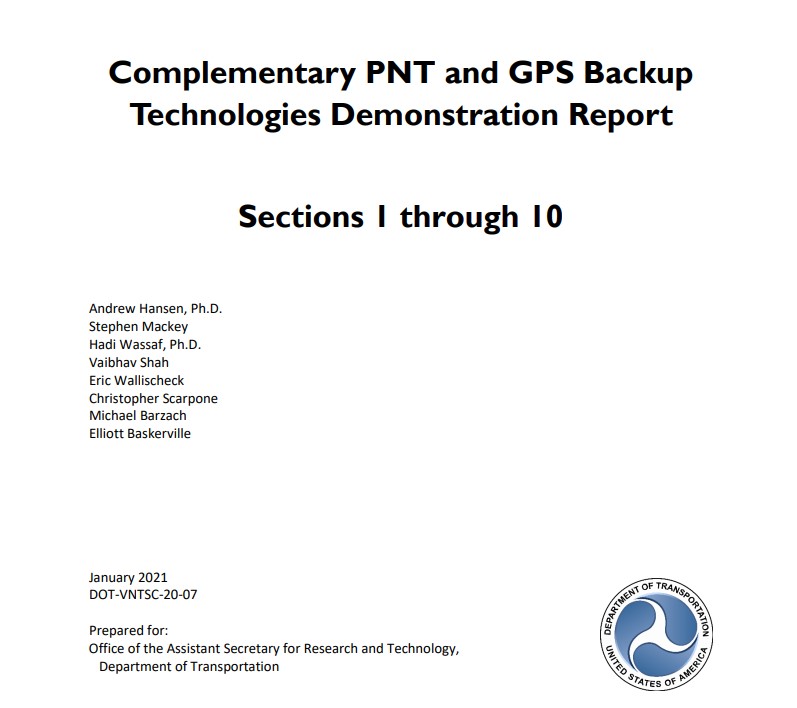
Battling Distrust of GNSS
Uncertainty and lack of confidence in GNSS is a vulnerability that could be more harmful overall than actual incidents. This could be true for defense applications, but even more so for non-defense applications. It can be as simple as someone seeing an error in the map of the navigation app on their phone and blaming it on “GPS” Or seeing a news item about a military drone being spoofed and captured, or about someone who drove into a lake while “following the GPS”. Problems experienced by the public may have absolutely nothing to do with the underlying technology, but instead on the maps and user error. It can be difficult to convince people otherwise.
Once the suspicion is there, users will often jump to a conclusion rather than pursue other elements of troubleshooting. I have spoken to operators of real-time GNSS networks, that provide corrections services for high precision applications, and often when users are experiencing problems, they wonder if they are being jammed. Or they suspect that “the military is moving the satellites around”. Verified instances of jamming are few, except around certain military installations, or under some (but not all) high-power transmission lines. I ran a spectrum analyzer for years next to one of the busiest stretches of highway in a major city, and only saw a handful suspicious, and brief spikes. But the uncertainty is always there.
A quote from the film “Inception” has the protagonist musing that an idea, once planted, can be more dangerous than a virus. Here is where even a handful of cyber-warfare attacks on PNT could breed widespread and outsized distrust of GNSS and related systems. The fallout could have a chilling effect on, for instance, the adoption of assisted and autonomous vehicles. And particularly if accompanied by social media disinformation campaigns, exacerbating people’s existing apprehensions. And we have all seen how effective dis-information campaigns have been in fomenting and exploiting suspicion, division, and distrust. This could, if taken to the extreme, even translate to funding woes for GNSS modernization.
System-Wide Vulnerabilities
The potential for GPS or GNSS to suddenly and completely “go away” is quite slim. And especially unlikely as there are now multiple constellations. As more receivers are incorporating signals from multiple constellations, even if in the unlikely event of an issue with one constellation, PNT could continue with one or more of the others. But are there scenarios where all could be compromised?
If there was a cosmic level event, like an unprecedented solar event, meteor, etc., there would be much more worry about than GNSS. Electro-magnetic pulse (EMP) style attacks could certainly disrupt GNSS over wide regions but would also be a hazard to many devices and systems bedsides GNSS. And there is the hypothetical scenario of a bad actor using satellite-killer missiles. But such acts would be tantamount to, if not defacto, declarations of war. If at a nation-state level, bad actors would need to compromise all GNSS constellations and picking a fight with all operators at once is even more unlikely—by far—than attacking an individual system.
There can, and have been, brief systemwide issues with individual constellations. On April 2nd. 2014 the Glonass constellation became mostly unusable around the globe for up to 11 hours. It is widely accepted that an incorrect ephemeris was uploaded to Glonass satellites, and it took 11 hours to propagate a correct one throughout the constellation. There have been anomalies in other constellations at the individual level, but few users would notice this as modern receivers, including many phones, incorporate multiple constellations.
In a military action scenario, could a GNSS constellation operator suddenly choose to disable civilian access to signals, either regionally or globally, for strategic or tactical purposes? Yes, but again there are other constellations, and would they deliberately wish to hobble their own civilian uses and the economic value of that amenity? If all GNSS suddenly went dark, then that would have a tremendous negative global impact for everyone, including for their own populace. There are no ways mitigate catastrophic cosmic level events, but systemwide outages due to other geo-political hazards, however unlikely, could be preventable through diplomacy. Still, these considerations are a vulnerability that contribute to the case for backups and alternatives.
Space-based Alternatives
Having multiple constellations (GNSS) addresses one of the key vulnerabilities for PNT, namely the single-point of failure should only the GPS constellation become inoperable. Alternative satellite-based solutions are being explored for both defense and civilian sectors. Adding even more constellations could only make things better, especially if they have certain advantages over current GNSS systems.
There is a lot of buzz in recent years about low-earth orbit satellites (LEO) for communications, earth observation, and navigation. There are many proposals for huge constellations of thousands of smalls sats that many hope will solve rural internet issues. There is related R&D seeking to leverage some or all of these LEO sats for various positioning and navigation solutions. How they would work is at one level fundamentally the same as existing GNSS satellites, but there are differences stemming advantages stemming from their lower orbit.
Inquiries into defense related R&D are often meet with tight lips, but the physics of LEO based PNT would be fundamentally the same in commercial systems. Christina Riley, VP of Commercial PNT at Satelles provided the following details about LEO-based PNT, highlighting their own solution:
“LEO constellations have different operational features and performance characteristics than MEO systems, such as increased signal strength. For example, STL from Satelles has a signal that is 1,000 times (30db) stronger than GPS, making it very difficult to disrupt or manipulate and allowing it to penetrate deep into GPS-challenged environments where signals are obstructed or degraded, including indoors and underground. The polar satellite orbit also provides a strong signal at the poles (where GPS is weakest).
“Because LEO satellites orbit below the Earth’s magnetosphere and inner Van Allen Belt, they are well protected from space disturbances (e.g., solar storms). They are also far less susceptible to the deleterious effects of internal charging and surface charging that can cause permanent damage to the electronic components of space vehicles operating in MEO or GEO orbits. Unlike land-based systems, satellite systems are effectively impervious to terrorist attack, and are far less vulnerable to state actor attack.”
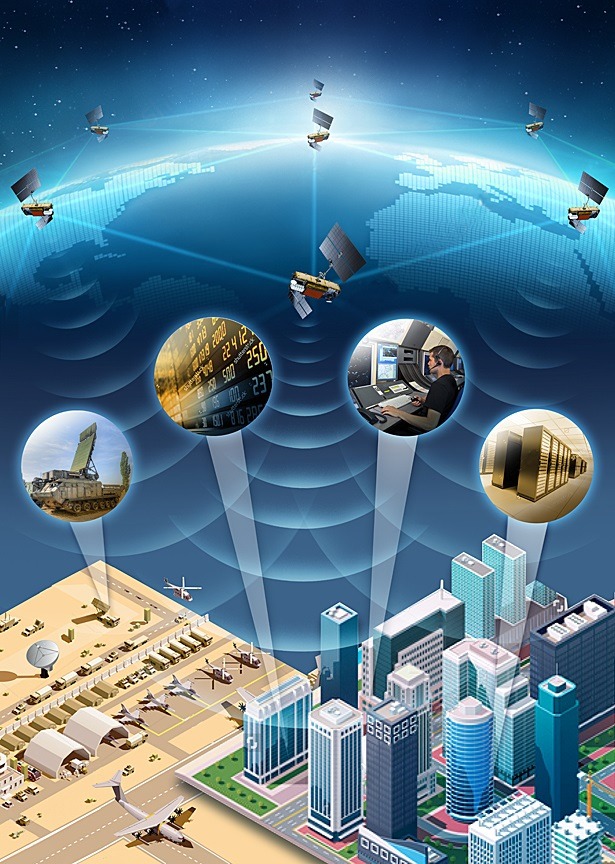
There are some potential downsides to LEO, and especially small sat-based PNT solutions. LEO typically do not have the same lifespan as MEO sats, like those of the existing GNSS constellations, and may need to be replaced much more frequently. Orbital stability, tracking and orbit product development can be more of challenge. Costs can be lower per vehicle, but you need far more of them for full global coverage, and the smaller size of some of the proposed vehicles can present limitations. These challenges are not insurmountable, and it is expected that such systems will serve well as valuable PNT backup and alternatives.
Terrestrial Signal-based Alternatives
The idea of “putting a GPS satellite on a tower or mountaintop” is not a new idea and has been implemented in various forms for decades. There have been several implementations of pseudolites, like Trimble’s Terralite, used for applications like machine control and mining. Pseudolites and other multilateration solutions from ground-based networks of transmitters can also provide advantages over GNSS in sky-view-challenged areas, even indoors.
Such pseudolite systems seek to deliver precisions similar to those derived from high-precision GNSS solutions”: centimeter-level, and in real-time. To that end there are also hybrid systems like Leica Geosystems Jigsaw, that combines a high precision GNSS receiver with a receiver from Locata that uses signals from networks of their ground transmitters The two solutions complement each other in mixed sky-view environments. This hybrid has been deployed for mines, but there are also examples of for instance, a Locata system operating without GNSS, at the indoor crash test facility of the Insurance Institute for Highway Safety.
Radio navigation has been around for a century, with large scale implementations like the LORAN navigation beacon system, begun in the 1940’s. In the 1990’s, eLORAN (enhanced) was developed and there is strong support for widespread deployment. It overcomes some of the vulnerabilities of GNSS, but like other PNT alternatives it can serve certain applications very well, but not all the end uses GNSS can. Like other alternatives, users would need separate, dedicated, or integrated receivers. This would though, provide a valuable backup and alternate for critical transportation applications.

The quest for indoor and sky view challenged area positioning and navigation has seen a promising and pronounced recent wave of R&D. Numerous indoor navigation solutions have already been productized, with many more on the way. These are mostly variations on radio signal positioning, using dedicated beacons, or existing sources of RF like WiFi routers, or some that leverage multiple types of signals opportunistically. There are some that can achieve cm-level precision, in small areas and controlled conditions, like Locata and an ultra-wide-band solution for rail and factories from Humatics, but many are low precision and more suited for navigation.
Timing
The “T” in PNT is often the least understood yet may in some way be the most valuable. Precise time enables the synchronization of our very wired world. GNSS delivers precise time, which is the foundation for how it’s positioning, and navigation solutions work and provides synchronized time across the globe. GPS/GNSS has become the world’s clock. There are alternatives for positioning and navigation that do not deliver precise time, but some that do.
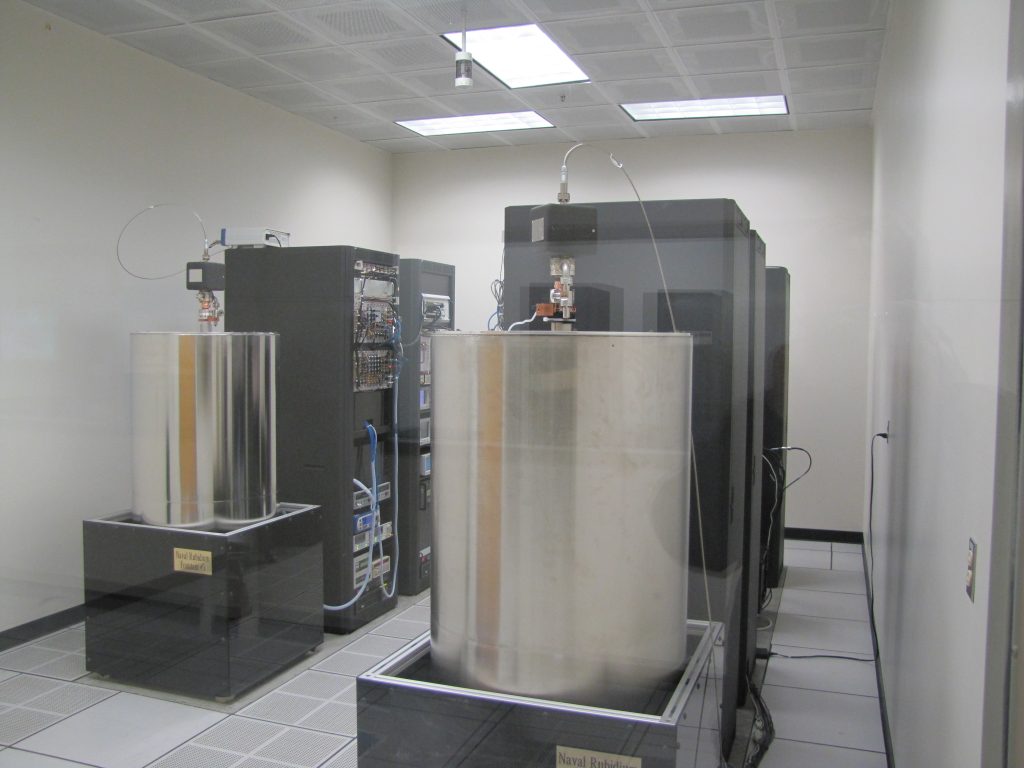
GNSS is well designed to deliver precise time globally, as each satellite has an atomic clock, that is synchronized periodically. Global time is derived by a cooperative global network of atomic clocks, and the GNSS sats are updated before there is significant drift in their own atomic clocks. Some terrestrial PNT solutions are getting their time laterally from GNSS, so they would not be a failover for precise time should GNSS be unavailable. But there are some that have addressed this.
NextNav is a PNT solution that uses networks of tower-mounted beacons for positioning and navigation. It works even in many indoor environments including, as tests have shown, two floors down in a rail station. The interesting twist is that the NextNav beacons have small atomic clocks installed; they can provide accurate time as well as precise (albeit not cm-level) positioning and navigation.
The precise timing community is also eager to be able to work with time that is more precise than even GNSS can deliver. Work on closed-time-loop radio networks (for small regions) show promise, and well as advances in leveraging fiber optic networks. These would deliver not only more precise time but would serve as a backup for GNSS delivered time.
Sensor Integration
One of the most troubling aspects of key vulnerabilities, like interference, spoofing, and jamming is the uncertainty they can cause. What if the GNSS is giving an incorrect location or heading? And how do we know? A misgiving people voice about autonomous vehicles is the mistrust of GNSS. To help address this, there is a growing positioning services industry, providing augmentations in real-time for GNSS solutions, mostly with the nascent autonomous vehicle market in mind.
Using networks of base stations, solutions and corrections ranging from RTK to precise point position (PPP) augmentations, these ‘corrections’ are delivered to the mobile receivers via cellular networks and dedicated L-band satellites. This can provide more confidence in the precision of the solutions, but these are still dependent on GNSS. A key takeaway is that none of these systems developed for autonomy rely solely on GNSS. There are multiple sensors integrated: inertial, cameras, lidar, etc.

A valuable tool in determining if your GNSS solution has been spoofed with integrated sensors is inertial measurement units (IMU). These can help determine if there has been an unexpected change of position or heading from the GNSS, indicating that you may have been spoofed.
Policy
There are potential hazards for GNSS that have nothing to do with the underlying science. It can be from those seeking to bend the science, or ignore it, for other agendas. For example, several GNSS signals are in radio spectrum bands set aside as “quiet neighborhoods” for satellite uses. Unfortunately, there is constant lobbying for authorization to encroach in or re-task said spectrum in favor of much higher-power-signal (and more profitable) terrestrial services.
A highly contentious case of such spectrum jockeying occurred a decade ago when an investment company bought a failing satellite communications firm that had spectrum adjacent to GPS. That spectrum had otherwise been set aside for mobile satellite systems (MSS). By appealing to the U.S. Federal Communications Commission (FCC) the new owners were granted conditional authorization to augment their planned new satellite communications service with an “ancillary terrestrial” component. The condition was that they needed to demonstrate this would not cause undue interference for GPS. Strong opposition from defense, transportation, and private sector GPS end-use constituencies made headway against a powerful and well-funded lobbying effort. But in the end, the interference issue could not be fully resolved and all but halted the plan. Read a recap here. But the matter has risen again quite recently. Spectral competition will only increase, and GNSS systems will forever face such challenges.
Funding to update and modernize for systems can and does face budgetary constraints. Fiscal priorities are often set by those who do not fully understand the full magnitude of the defense, public safety, security, and commercial value of GNSS. There are even instances of supporters of specific backup and alternate solutions seeking some of the GNSS funding.
There is an irony in that while many elements of what is classified as “critical infrastructure”, like power networks and transportation, rely on GNSS, yet the satellite systems themselves have not been given such a classification. The U.S. Space-based Positioning Navigation and Timing Advisory Board has regularly expressed that it should. But the body is an advisory, and formal designation has yet to happen. To do so could reduce or eliminate certain potential policy related vulnerabilities.
The Quest for Backups and Alternatives
The real-world risks may be low, but the potential is there. What could happen if GNSS fails? Be it localized jamming, various types of RF interference, or issues with the satellite constellation, when the user or application loses GNSS, the impacts could range from inconvenience, to potentially serious:
- Tactical and strategic defense application disruptions
- Transportation disruptions
- Property and environmental damage
- Injury or fatality
- Distrust of systems
- Business and commerce losses
- Internet and communications system disruptions
- Increased liability
Often the only things the general public hears about GNSS vulnerabilities is when they are couched in terms of the worst-case scenarios, or sensationalist headlines claiming that the military wants to “abandon GPS in favor of ____”. Besides being lazy journalism, and somewhat irresponsible, such claims are far from the truth. No one is seriously proposing that any existing or proposed PNT alternatives could completely replace GNSS for all applications. There are proposed solutions that could serve very well for limited applications, over limited geographic areas, and could be great backups and alternatives in that capacity, but not as a complete replacement for GNSS.
One alternative that got a lot of recent press was a proposal to produce very detailed models of the earth’s magnetic fields and use these as an aid to military navigation. But this would only be accurate to a kilometer, whereas uncorrected GNSS is good to a meter, and precise (augmented) GNSS can be precise to a centimeter. Quantum navigation (or quantum compass) is another promising potential technology for coarse navigation; essentially inertial navigation using atom interferometry. It can work deep under water and underground, but at very low precision compared to GNSS.

It is no surprise that certain non-defense end-use segments for GNSS have been very proactive in exploring and promoting the development of backups and alternatives. Among these is the transportation sector. The US Department of Transportation has taken a lead role in this matter and recently completed a comprehensive study of 11 complimentary technologies that could work for positioning and timing in the absence of GNSS. Two demonstrate LEO satellite solutions, two for fiber optic timing, one for a localized map database matching system, IMU and UWB, and 6 more with terrestrial radio-based solutions. The good news is nearly all of the solutions tested performed well and showed tremendous potential.
An alliance PNT industry firms is promoting alternatives. The Open PNT Industry Alliance has formed, promoting open markets to provide much needed protection and backups for GPS/GNSS-based positioning, navigation, and timing.
We are already well along the path to addressing vulnerabilities. GNSS constellations are steadily modernizing, with new, and improved signals. End users devices are getting smarter, being able to leverage multiple constellations, detect and reject bad signals, detect interference and spoofing, and many are integrating multiple sensors. Augmented by these backups and alternatives, the reliability of, and confidence in GNSS based PNT to overcome vulnerabilities could rise.
Yes, there are vulnerabilities and yes these could, in worst case scenarios, have great negative impact. But it is more about potential than impending peril. As you can see from the above, good people are working hard on these issues in the defense and civilian sectors; we are in good hands. To quote Douglas Adams: “Don’t panic!”





